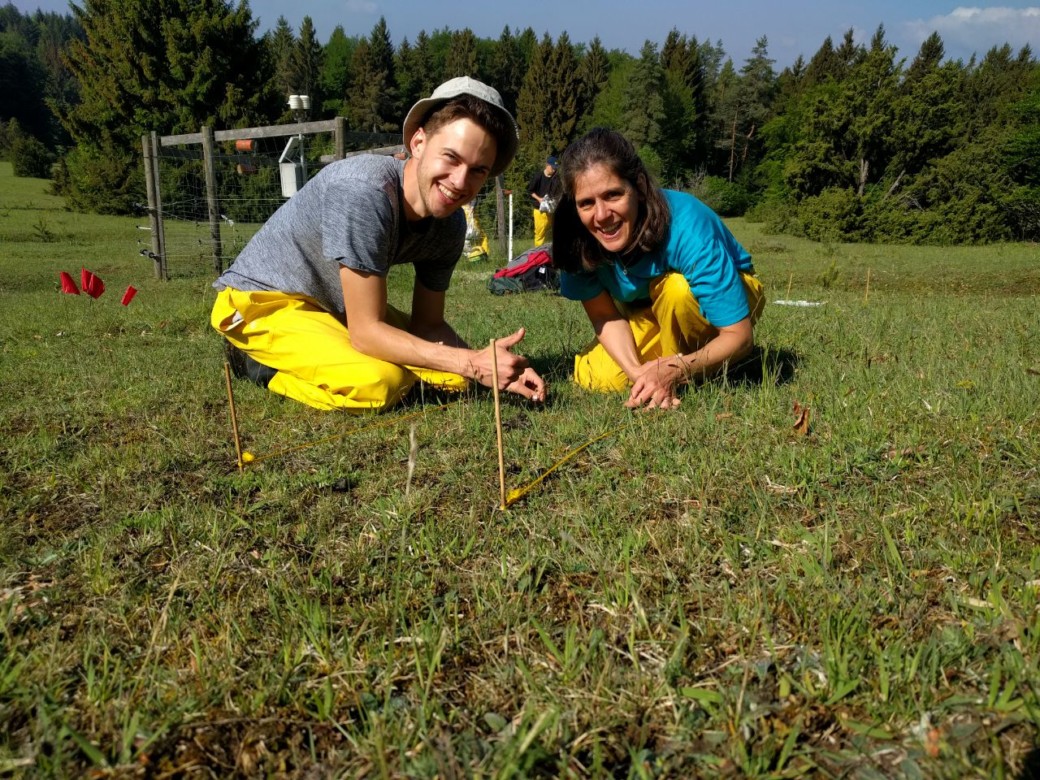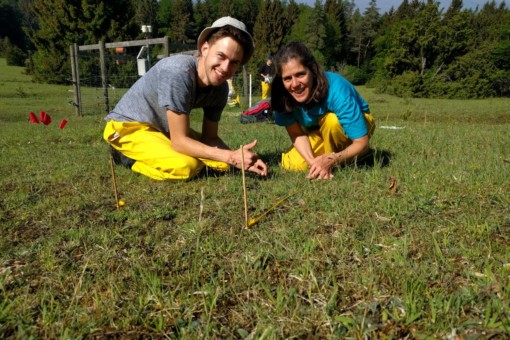Plant diversity and plant-related processes
Also in this phase of the project, the core botany project will investigate the diversity of vascular plants, lichens, mosses and fungi, the productivity of grasslands and, in experiments, the influence of dispersal limitation and disturbance.

The major aims of this project are:
1. to assess the effect of land use on the diversity of plants and lichens in grassland and forest as well as on plant pathogenic fungi in grassland,
2. to measure functional and phylogenetic diversity of grassland plants cultivated under standardized conditions,
3. to monitor above- and belowground grassland productivity and nitrogen content as important ecosystem processes, and
4. to manipulate plant diversity experimentally by seeding, disturbance, or plant removal to test the consequences of changed plant diversity for ecosystem processes and how these depend on land use.
The repeated monitoring of diversities and ecosystem processes will further allow us to estimate the stability and resilience of communities, and to relate changes in plant diversity and composition to changes in other taxa. In addition, our project will provide important baseline information for other projects and allow assessing the effect of taxonomic, functional, and phylogenetic plant diversity, and grassland productivity on ecosystem processes and the diversity of other taxa.
| Methods | Grid plots (1000 plots) | Experimental plots (100 plots) | |
|---|---|---|---|
| Plant Diversity | |||
| Forest vegetation | one releve in spring and autumn, 20 x 20 m | x | |
| yearly repeated | x | ||
| Grassland vegetation | one releve in summer, 4 x 4 m | x | |
| yearly repeated | |||
| Vegetation height | x | ||
| Biomass | x | ||
| species number-Areal-relation | x | ||
| Seed bank | x | ||
| Functional Diversity | traits from BIOLFLOR-Database, Morphological traits, dispersal traits, pollination traits | ||
| Genetic Diversity | AFLP and microsatellites of selected species | x | |
| Seeding experiment | Seeding of grassland species from the regional species pool to test dispersal limitation | x | |
| Seeding of selected tree species in fenced and unfenced subplots of EPs to test dispersal limitation (planned) | x | ||
| biomass and SLA measurement to study the effect of diversity on productivity | x | ||
| Green house study | germination success | ||
| Parasites and Herbivores | identification of parasites and Herbivore damage on thistles | x | |
| Disturbance experiment in grassland and forest | Simulation of trapping and dryness in different intensities to study the effect of disturbance on the stability of ecosystem with varying diversity | x | |
| Population biology of selected species | Quantifying population density, herbivory, pathogen load and pollinator limitation on selected plant specie | x |










